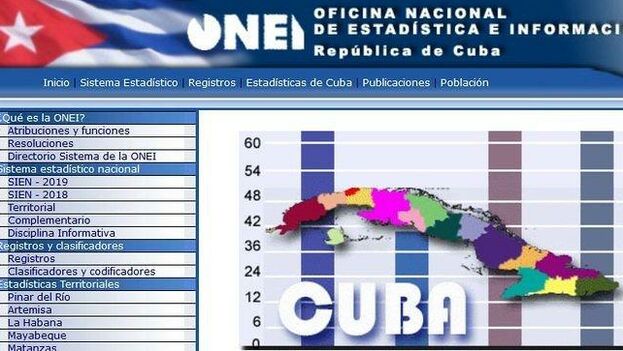
![]() 14ymedio, Elías Amor Bravo, Economist, 25 September 2022 — The recent publication of the Cuban National Office of Statistics and Information (ONEI) entitled “Investments, selected indicators” in the first half of 2022 concludes that investments reached 31,726.2 million pesos, an increase of 41% compared to the same period in 2021, when investments stood at 21,823.2 million pesos.
14ymedio, Elías Amor Bravo, Economist, 25 September 2022 — The recent publication of the Cuban National Office of Statistics and Information (ONEI) entitled “Investments, selected indicators” in the first half of 2022 concludes that investments reached 31,726.2 million pesos, an increase of 41% compared to the same period in 2021, when investments stood at 21,823.2 million pesos.
This significant growth, however, has to be pondered and discussed, which is the purpose of this post. It should be borne in mind that the “ordering task” of 2021 disrupted monetary variables with the disappearance of the CUC, the unification of the Cuban peso and the corresponding price and wage adjustments. This means that the ONEI publication is the first one that allows a comparison of the two periods and the various issues that deserve to be analyzed.
For example, with the inflation that has shaken the Cuban economy in recent years, monetary amounts have to be deflated, that is, corrected, to show the effect on prices, in order to determine their real value. Before 2021, inflation in the Cuban economy was low, but the Ordering Task* increased the rate that year by 77.2%, something unknown in the historical records.
This means that 2021 pesos didn’t have the same value as those of 2022, if annual inflation in the first half of 2022 stood at the CPI indicator (the only available) at 30%. Therefore, in order to obtain the real value of investment growth in the first half of 2022, the nominal growth, 41%, has to be divided by the increase in prices, 30%, so then investments increase compared to the previous year, but just over 10%. That is still a significant number, but lower than that offered by ONEI, and of course, insufficient to meet the needs of the Cuban economy.
Failure to provide the real value without the corresponding deflation is a mistake. ONEI should include nominal and real data in its estimates, as other statistical services do in countries affected by high inflation.
Taking into account this 30% increase in consumer prices, as a measure of the conversion of the nominal variables into real, when comparing the evolution of investment in different components, such as construction and assembly, equipment and others, it turns out that in the first, the nominal increase was 38% (7% in constant values).
In the second component, the nominal increase was 50%, which, corrected for the effect of inflation, was really 20%; and in the third case, the nominal increase of 48% becomes 18%.
This behavior of the three components of the investment results in their distribution or weight in the total to remain almost stable, with an increase in construction and assembly and other components; but the investment in equipment is reduced in terms of participation in the total. This design doesn’t meet the needs of the Cuban economy.
Another surprise comes from the territorial distribution. The data indicate a notable reduction in Havana’s participation in the total, which fell from 63% in 2021 to 56% in 2022. The significant loss of investments in Havana was channeled to other provinces such as Mayabeque, where investment multiplied by five, or to Santiago de Cuba and Holguín, where the increases were lower, but with higher levels. In general, most of the provinces increased their participation in the total, except Havana, where this adjustment took place. It seems that the authorities have wanted to carry out an investment policy that compensates for the deep territorial mismatches that exist.
The publication also offers investment data by economic activity, and again, concentration is highlighted, but with downward and upward trends. This is the case of business and real estate services, which with 33.8% of the total again occupies first place in the regime’s investment preferences. But as happened in Havana, it presented a downward trend, since in 2021, the percentage reached 40.6% of the total. What business services lost was gained by the manufacturing industry, which went from 13.4% to 18.7% of the total, and investment in electricity, which went from 6.9% to 8.3%.
Investment in mining and quarries decreased from 12.7% to 7.5%. Health and education, culture, administration and defense services seem stable in the two-year comparison, and the same is true of agriculture, which still doesn’t attract investment.
The investment design that emerges from this ONEI report points to a scenario of continuity in which little is innovated and what is reversed follows rigid and bureaucratic formats adapted to the interventionist nature of the regime. There is nothing suitable for what the Cuban economy needs in order to prosper.
*Translator’s note: *The “Ordering Task” [tarea ordenamiento] is a collection of measures that include eliminating the Cuban Convertible Peso (CUC), leaving the Cuban peso (CUP) as the only national currency, raising prices, raising salaries (but not as much as prices), opening stores that take payment only in hard currency, which must be in the form of specially issued pre-paid debit cards, and a broad range of other measures targeted to different elements of the Cuban economy.
Translated by Regina Anavy
____________
COLLABORATE WITH OUR WORK: The 14ymedio team is committed to practicing serious journalism that reflects Cuba’s reality in all its depth. Thank you for joining us on this long journey. We invite you to continue supporting us by becoming a member of 14ymedio now. Together we can continue transforming journalism in Cuba.
